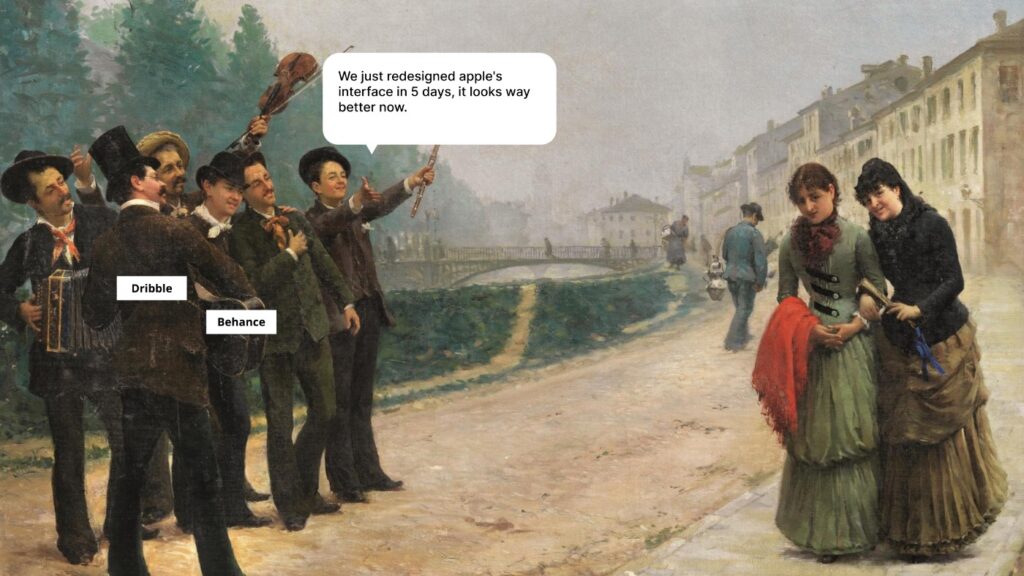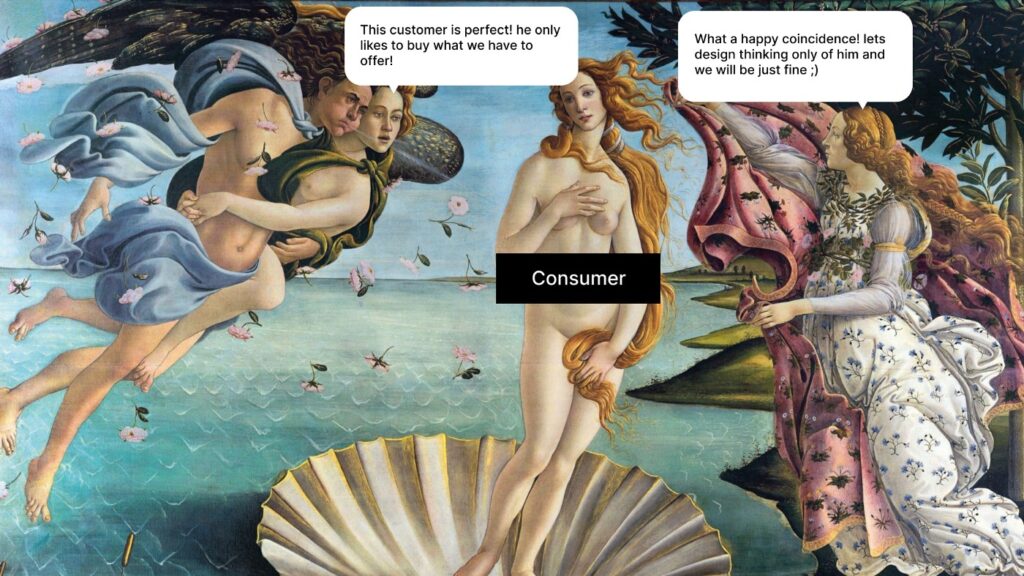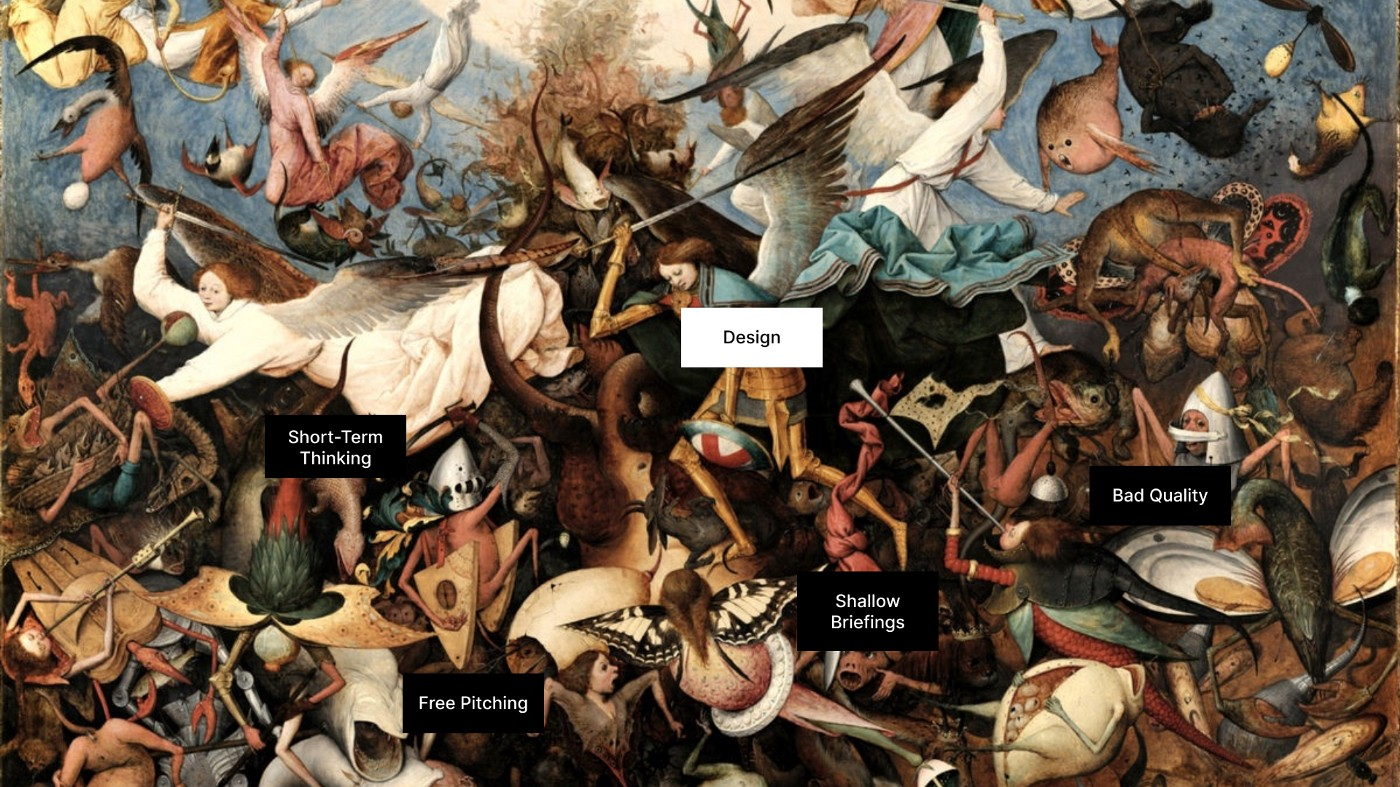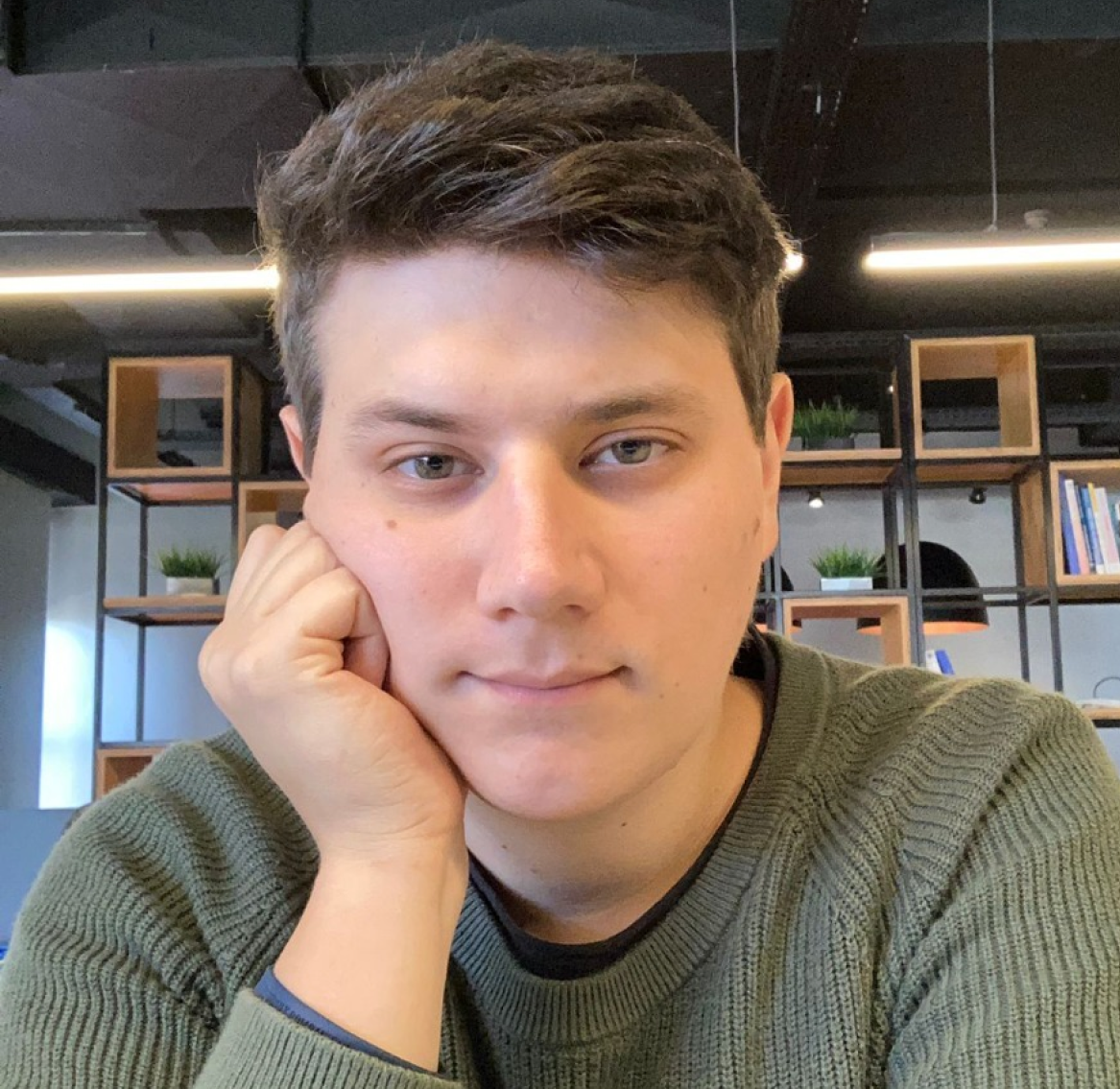Design can generate positive changes and develop a business beyond expectations, but for that to happen, we need to understand some aspects that make it a useful tool for companies – and not a product in crisis.
There is a lot of beautiful content on the internet, but design as a decoration tool is not capable of promoting what an organization expects. Here are some reasons why design/branding/marketing agencies end up damaging the image of design as a results tool:

Lots of jargon and little to no action at a fundamental level.
You know that meeting where more than half of the guests are not part of the design team, but are forced to hear terms they don’t reckon, like heuristics, benchmark, etc? That’s because we often forget about the audience to which we are presenting our collective ideas, thus failing to explain how valuable they are to the stakeholders on call.
When this happens, the result is almost always another meeting or the total lack of interest by the organization’s to take part in the solution.

Large companies with “foolproof” processes.
These are large organizations (you might know some of them) that sell foolproof processes for working with design on the Internet. The problem with this method is that, each project is a new challenge, and the the processes we know can only be applied as a tool for the designer to make a project clearer and more objective, and not as a foolproof solution.

Fake cases and invented touchpoints
Nowadays, it is easy to find projects in design portfolios that perform very well under a made up challenge that hasn’t seen any kind of validation or exposition to the market.
This creates a fake sense that that interface was the solution to the case. It also happens when organizations insist on using design as a stage for designers to gain recognition and reach, while their real customers don’t see results.

Romanticized view of consumers
A person’s behaviors and motivations are much more complex than we realize. The issue is that many organizations underestimate the consumer’s needs and romanticize the end user. The result of this stereotyping is blind solutions for users that do not exist, which do not generate any kind of value in the real market.
To escape this storm of bad examples, we need to go beyond the “decorative” vision that design offers and focus on what can generate power for a company.
How to empower an organization through design?
A successful design project is one capable of changing the reality of a company. According to Jaako Tammela, director of CX and design at DASA, design comes with the mission of putting people at the center of decisions, redesigning products and channels in a strategic and operational way. And many times the paths to the success of this redesign come understanding other sectors of a company.
Therefore, in order to centralize an organization, we need to map its interdependence relationships and understand how a project can strengthen all sectors in an equal way, making all operators able to give power to the design of that project.
But beware: when we influence an organization, it can have both good and bad consequences.
A design solution, for example, can be a blessing if it empowers all stakeholders, but a curse if it destroys the power of others, causing resistance, sabotage and boycotting the solution.

The curse happens when we reduce the role of a certain sector. In this case, we are negatively affecting an organization, generating resistance to that change. It may even cross your mind that you are not doing your job right or that the solution presented does not make sense, but often we are talking about a change that disregarded an important area within the company.
For this reason, when designing solutions for a system, it is important to empower all parts of the process, so that the project scales to all sectors, nurturing a culture of collaboration.
TLDR: to develop successful systems through design, you must have the opportunity to cause change from the inside out. The power of design comes from understanding the interpersonal dynamics of an organization and causing transformations that empower all stakeholders from the most technical level of an operation to the end consumer.
Credits:
Ricardo Martins (Future of design lecture)
Slava Shestopalov 🇺🇦(Inspired images)








